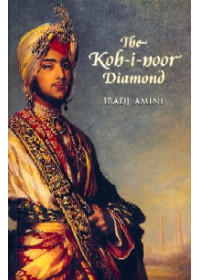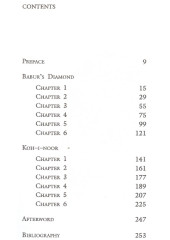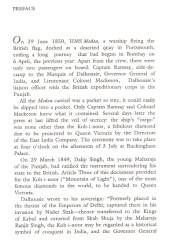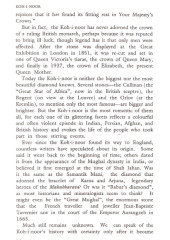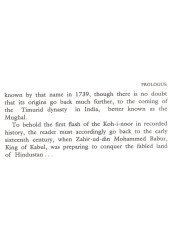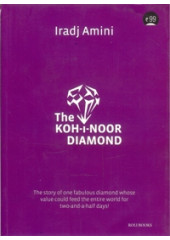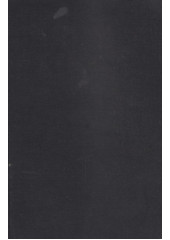Monday to Saturday - 10:00 Am to 9 PM
Now Enjoy Bulk Discounts on Books as Mentioned Below
These Discounts are in addition to the Discounts on Individual Books (Visible as Bulk Discount for Books in Cart)
Extra 10% Off If Books Purchased Exceeds Rs 3000 or 75 USD or 60 GBP or 60 Euro or 100 AUD or 100 CAD
Extra 15% Off If Books Purchased Exceeds Rs 6000 or 150 USD or 120 GBP or 120 Euro or 200 AUD or 200 CAD
Extra 20% Off If Books Purchased Exceeds Rs 15000 or 225 USD or 180 GBP or 180 Euro or 300 AUD or 300 CAD
Extra 25% Off If Books Purchased Exceeds Rs 30000 or 300 USD or 240 GBP or 240 Euro or 400 AUD or 400 CAD
Introduction To ‘The Kohinoor Diamond’ By Iradj Amini
One fabulous diamond whose value could feed the entire world for two-and-a-half days. Four races: Indian, Afghan, Persian and English, whose destinies were inextricably involved with this gem. A Persian oilman's son who went on to virtually rule Golconda and its vast diamond mines. A Mughal prince, hated by history, who was sinned against as much as sinning. Only an Indian or a Persian could tell this great story with all its nuances.
'John Lawrence hated the conventionalities of life and had no use for jewels ... he stuffed the box containing the Koh-i-noor into his waistcoat pocket and went about his business.
About six weeks afterwards, when Lord Dalhousie asked for the diamond to send to Queen Victoria, Lawrence was horrified.
He went to his room, his heart pounding wildly, and asked his old Indian bearer if he had found a small box in his waistcoat pocket.
"Yes Sahib, I found it and put it in one of your boxes."
"Bring it here."
The bearer did so, and he held it out for John Lawrence who heard a huge sigh of relief.
The bearer observed with astonishment: "There is nothing here, Sahib, but a bit of glass!" '
Preface To ‘The Kohinoor Diamond’ By Iradj Amini
On 29 June 1850, HMS Medea, a warship flying the British flag, docked at a deserted quay in Portsmouth, ending a long journey that had begun in Bombay on 6 April, the previous year. Apart from the crew, there were only two passengers on board: Captain Ramsay, aide-decamp to the Marquis of Dalhousie, Governor General of India, and Lieutenant Colonel Mackeson, Dalhousie's liaison officer with the British expeditionary corps in the Punjab.
All the Medea carried was a packet so tiny, it could easily be slipped into a pocket. Only Captain Ramsay and Colonel Mackeson knew what it contained. Several days later the press at last lifted the veil of secrecy: the ship's "cargo" was none other than the Koh-i-noor, a fabulous diamond due to be presented to Queen Victoria by the Directors of the East India Company. The ceremony was to take place at four o'clock on the afternoon of 3 July at Buckingham Palace.
On 29 March 1849, Dalip Singh, the young Maharaja of the Punjab, had ratified the instrument surrendering his state to the British. Article Three of this document provided for the Koh-i-noor ("Mountain of Light"), one of the most famous diamonds in the world, to be handed to Queen Victoria.
Dalhousie wrote to his sovereign: "Formerly placed in the throne of the Emperors of Delhi; captured there in his invasion by Nader Shah—thence transferred to the Kings of Kabul and extorted from Shah Shuja by the Maharaja Ranjit Singh, the Koh-i-noor may be regarded as a historical symbol of conquest in India, and the Governor General rejoices that it has found its fitting rest in Your Majesty's Crown."
But in fact, the Koh-i-noor has never adorned the crown of a ruling British monarch, perhaps because it was reputed to bring ill luck, though legend has it that only men were affected. After the stone was displayed at the Great Exhibition in London in 1851, it was re-cut and set in one of Queen Victoria's tiaras, the crown of Queen Mary, and finally in 1937, the crown of Elizabeth, the present Queen Mother.
Today the Koh-i-noor is neither the biggest nor the most beautiful diamond known. Several stones—the Cullinan (the "Great Star of Africa", now in the British sceptre), the Regent (on view at the Louvre) and the Orlov (at the Kremlin), to mention only the most famous—are bigger and brighter. But the Koh-i-noor is the most romantic of them all, for each one of its glittering facets reflects a colourful and often violent episode in Indian, Persian, Afghan, and British history and evokes the life of the people who took part in those stirring events.
Ever since the Koh-i-noor found its way to England, countless writers have speculated about its origin. Some said it went back to the beginning of time; others dated it from the appearance of the Mughal dynasty in India, or believed it first emerged at the time of Shah Jahan. Was it the same as the Samantik Mani, the diamond that adorned the bracelet of Kama and Arjuna, legendary heroes of the Mahabharata? Or was it "Babur's diamond", as most historians and mineralogists seem to think? It might even be the "Great Mughal", the enormous stone that the French traveller and jeweller Tean-Baptiste Tavernier saw in the court of the Emperor Aurangzeb in 1665.
Much still remains unknown. We can speak of the Koh-i-noor's history with certainty only after it became known by that name in 1739, though there is no doubt that its origins go back much further, to the coming of the Timurid dynasty in India, better known as the Mughal.
To behold the first flash of the Koh-i-noor in recorded history, the reader must accordingly go back to the early sixteenth century, when Zahir-ud-din Mohammed Babur, King of Kabul, was preparing to conquer the fabled land of Hindustan . . .
From the Backcover of ‘The Kohinoor Diamond’ By Iradj Amini
A courtesan had told Nadir Shah that the priceless diamond lay hidden in Mohammed Shah's turban. Citing an ancient tradition, the victor demanded an exchange of headgear. At last the diamond was his. Or was it? Hastily he undid the folds .... Wonderstruck at the gem's size, brilliance and beauty, he exclaimed, "Koh-i-noor"!
1739: the gem now had a name.
About the Author Of 'The Kohinoor Diamond’
Iradj Amini was born in 1935 in Iran and studied in Teheran, Oxford and the U.S.A. He was the Shah of Iran's last ambassador to Tunisia and has authored a book on Napoleon and Persia for the Napoleon Foundation. Iradj Amini lives in exile in Paris and overcomes his nostalgia for Persia by visiting India frequently and by writing on Indian history. He is particularly fascinated by Maharaja Ranjit Singh.
Table of Contents For ‘The Kohinoor Diamond’ By Iradj Amini
|
CONTENTS |
|
| PREFACE | 9 |
| BABUR'S DIAMOND | |
| CHAPTER 1 | 15 |
| CHAPTER 2 | 29 |
| CHAPTER 3 | 55 |
| CHAPTER 4 | 75 |
| CHAPTER 5 | 99 |
| CHAPTER 6 | 121 |
| KOH-I-NOOR | |
| CHAPTER 1 | 141 |
| CHAPTER 2 | 161 |
| CHAPTER 3 | 177 |
| CHAPTER 4 | 189 |
| CHAPTER 5 | 207 |
| CHAPTER 6 | 225 |
| AFTERWORD | 247 |
| BIBLIOGRAPHY | 253 |
| Books | |
| Author | Iradj Amini |
| Pages | 257 |
| Cover | Paperback |
| Language | English |
The Kohinoor Diamond - Book By Iradj Amini
- Brand: Roli Books
- Product Code: SHE150
- Availability: Out Of Stock
-
Rs.175.00
Related Products
Sovereign , Squire and Rebel - Maharaja Duleep Singh - Book By Peter Bance
Table of Contents of the Book 'Sovereign , Squire and Rebel - Maharaja Duleep Singh' By Peter Bance ..
Rs.2,250.00
Queen Victoria's Maharaja Duleep Singh 1838 - 93 - Book By Michael Alexander, Sushila Anand
From the Backcover Of 'Queen Victoria's Maharaja Duleep Singh 1838-93' By Michael Alexander and S..
Rs.795.00
The Kohinoor Diamond
Summary of 'The Kohinoor Diamond' By Book By Iradj Amini A courtesan had told Nadir Sha..
Rs.99.00
History Of Koh-i-Noor Darya-i-Noor and Taimur's Ruby
Introduction To The Book 'History Of Koh-i-Noor Darya-i-Noor and Taimur's Ruby' By Bhai Nahar Sin..
Rs.175.00
Tags: books on sikh historical events, books on sikh history english the, kohinoor, diamond, iradj, amini, and, punjab

